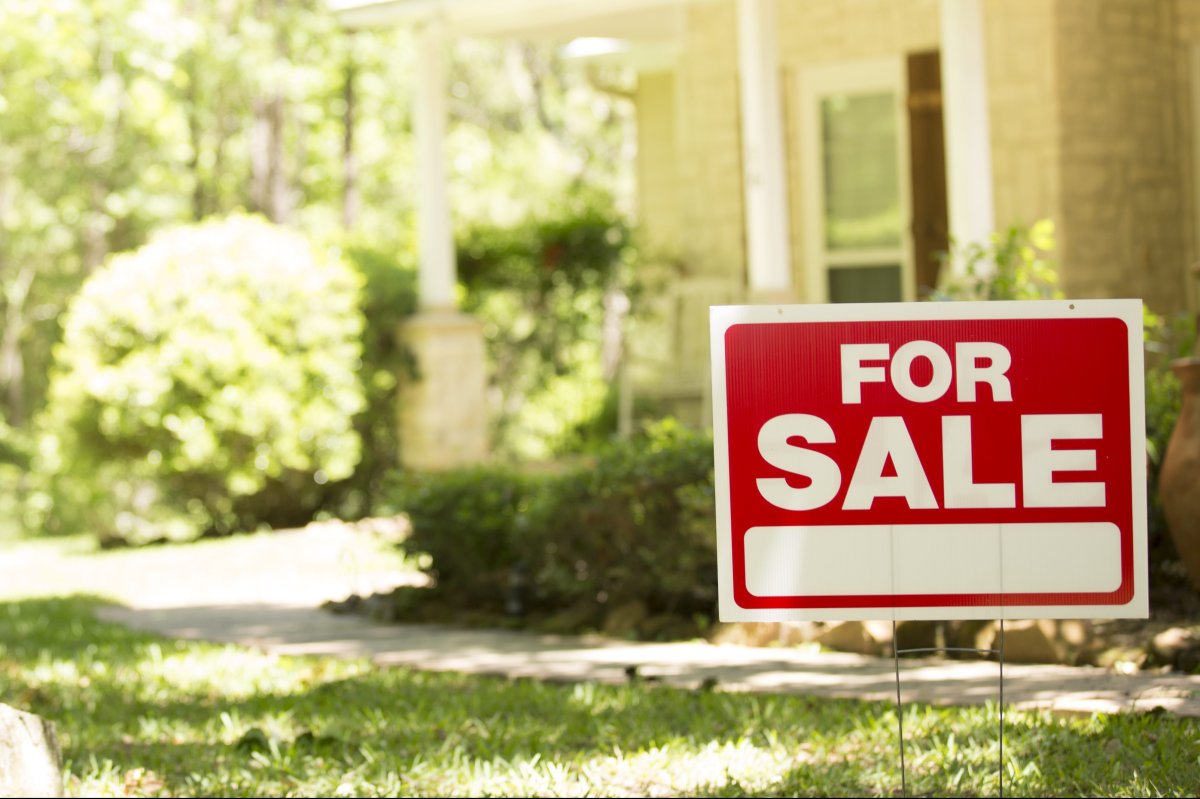During the COVID-19 pandemic, Karen Wright did something she’s never done before: she bought a home without ever seeing it in person.

The former Toronto resident initially stumbled upon her new Nova Scotia house using Google Maps.
“I was Google strolling about and I discovered a Victorian house on a big corner lot and it just really appealed to me. There was something about it that drew me to it,” she told Global News.
Back in 2020, the executive coach and empty nester found herself craving more space beyond the 900-square-foot midtown Toronto condo she lived in.
“When the pandemic hit, I found myself spending 24 hours a day, seven days a week in a very small space,” she said. “I was feeling a need for community and access to nature and the outdoors.”
Her search led her to the town of Bridgewater, N.S., with a population of about 8,600 residents. But the Atlantic bubble, which would have required her to quarantine for 14 days upon arrival, made it “impossible” to attend in-person showings. Instead, she relied on a local real estate agent she had come to trust.
Wright took possession of the house, which she purchased for $250,000, in January. Over the August long weekend, she and her puppy made the move to her four-bedroom, 2,400 square-foot century home on a corner lot.
There seems to be a marked increase in the number of people, like Wright, who are purchasing homes sight unseen. Observers say it’s a sign of how heated the housing market became over the course of the pandemic and is a reflection of the home supply shortage.

But it’s difficult to quantify this phenomenon. The Canadian Real Estate Association (CREA) told Global News that it doesn’t track the circumstances around sales, including whether or not property is purchased sight unseen.
Matt Honsberger, the president of Royal LePage Atlantic, says there has a noticeable increase in this real estate trend during COVID-19. Pre-pandemic, 15 per cent of home buyers in Nova Scotia were from outside the province compared with 24 per cent this summer.
He says they’re “coming out here in droves over the last eight months,” which has forced agents to rely more heavily on virtual viewings, and new software which offers 360 degree views of homes. Honsberger says agents are also relying on FaceTime to tour prospective buyers.
‘Not as crazy as it seems’
There is, however, anecdotal evidence of this phenomenon beyond Atlantic Canada, from people with years of experience in the industry.
RE/MAX sales representative Tanya Hyatt, who is based in Kingston, Ont. has been selling homes for 15 years. She told Global News that pre-pandemic she’s sold property sight unseen “once or twice” over the span of her career, but she’s had four clients make such purchases this year alone.
“Multimedia, 3-D tours, video and floor plans do make it easier to shop online for what is often one’s biggest purchase,” Hyatt says.
John Pasalis, president of Toronto real estate brokerage Realosophy Realty, points to what’s happened in the housing market during the pandemic to push up home prices and fuel the pandemic buying frenzy: historically low mortgage rates, a desire for more space, unprecedented household savings rates.
“It’s completely understandable that this is happening,” he told Global News about the increase in purchases sight unseen. “Quite frankly, it’s not as crazy as it seems. People buy homes pre-construction based on plans. It’s not like they physically see the home.”
Tina Hennigar is the population coordinator for Lunenberg, N.S. As someone who actively recruits people to relocate to the port town, she says it boils down to supply, or lack of it.
“Like the rest of Canada, we’ve had some housing shortages,” she told Global News. “So we talked to our municipal governments during the last municipal election and the provincial government to say ‘this is really an issue that needs all of our attention.’”
Enlisting help
Becky and Terry Irvine are currently settling into their new home, purchased sight unseen, in Belledune, N.B.
The house itself, at 700 square feet, is smaller than the 1,200-square-foot, three-bedroom, two-bathroom home they sold in Lindsay, Ont. But the backyard is about “six times” larger, according to Becky, with “800 or so acres of bush, ocean and fields around us.”
The couple craved more outdoor space and the price tag on their new home, which they say was $100,000 including all fees, or roughly one-fifth of what their previous place fetched.
The Irvines say their retirement plan has long been a return to New Brunswick, where Terry grew up. Pandemic lockdowns and restrictions have accelerated their planned move.
“Because of COVID, we’re not living the life that we want to so we’re going now, so we can actually enjoy ourselves,” Becky said.
Before making the purchase, the couple enlisted help from family members who live in the area.
“I asked my aunt and uncle to go look at the house for us,” says Terry. “My uncle’s a carpenter and I trust his opinion 100 per cent. He looked at it and said ‘yeah, it’s a no-brainer.’”
Wright, on the other hand, wasn’t able to have that kind of help and she discovered a lot of things that need work. By her estimates, fixing the place up to her liking will cost about $100,000.
“I did have it inspected and the report said it’s got good bones and standing reasonably straight for a 100-year-old house,” she said. “What didn’t come up in the inspection was the fact that the front porch was, in my contractor’s words, ‘a safety hazard.’”
“It was a pretty big project,” she says.
Another surprise came when Wright saw the backyard in person for the first time, and not through a wide-angle camera lens.
“My biggest disappointment or disconnect with what I thought was the backyard” she says. “The backyard is smaller than I thought. It’s a gravel pit.”
Wright has budgeted for renovations, made easier by the price differential between her Toronto condo and this new home. And she says she’s taking the advice of her contractor and tackling the most urgent items first. Overall, the empty nester says she’s pleased with her decision.
“I say feel the fear and do it anyway. If not now, then when? I’m really happy I did it,” Wright said. “We’re only a month and a bit into it, but already it’s been a great experience.”









Comments